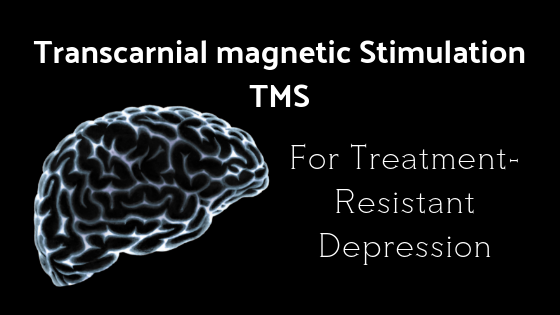Depression is a disorder that can take over one’s life very quickly, making even normal everyday activities a strain. It can interfere with occupational responsibilities, social activities appetite, concentration, and more. Like any other illness, the severity and treatability of the disorder may vary amongst individuals. While most may respond to psychotherapy or to psychotherapy in combination with medications, some do not. For those, transcranial magnetic stimulation (TMS) may be an option.
TMS is a non-invasive procedure that involves stimulation of the nerve cells in regions of the brain responsible for mood control. The repeated magnetic pulses to the brain have been shown to decrease depression symptoms. Research has shown that those struggling with depression have decreased brain activity in related brain regions, thus, the goal of the magnetic pulse is to activate them. The procedure is performed by placing an electromagnetic coil on the scalp, where it will deliver short and intense magnetic pulses to the brain to generate an electrical current. Its position is centered above the prefrontal cortex, a region in the brain showing abnormal electrical activity in depressed patients.
Though the effect on the brain is still not entirely understood, Ananda Pandurangi, MD, a psychiatrist at the Virginia Commonwealth University School of Medicine, explains the theory behind TMS, stating: “The theory is that when this stimulation occurs in the left frontal brain, it spreads to the underlying deeper areas of the brain that are involved in the regulation of mood. When we do it over and over again, it normalizes the neuronal circuits involved in depression,”
Since the procedure became FDA approved around ten years ago, its utilization has been growing all over the country. Though many questions about the process still remain, it has shown promising results with treatment-resistant depression.
The procedure is completely painless and each session takes about 30 minutes with the patient sitting awake, upright in a chair. it is performed by a physician or a nurse and typically involves 20-30 sessions given over the span of four to six weeks. Side effects are minimal with the most commonly reported being headaches and muscle soreness. There is also a small risk of seizure, comparable to the one associated with antidepressants. Due to the expensive machines, the total cost of the treatment can come out to $6,000 to $12,000. However, it has become somewhat more accessible to people as more insurance companies have begun to cover the pricey treatment. Antidepressants and psychotherapy are far more convenient and affordable than TMS, making them the first line therapy, but TMS would serve as a great alternative option for those with difficult to treat depression.
Who is a candidate for TMS?
In order to be approved for the procedure, you must be over the age of 18, have a diagnosis of major depressive disorder, and have not gotten results from anti-depressants. Those with metal implants, history of seizures, or facial tattoos with metallic or magnetic senstiive ink are not good candidates for this procedure.
There is also speculation about expanding TMS for treatment of other disorders. For example, a study found that TMS could potentially be effective in treating vascular depression. Others hypothesize utilizing TMS in the treatment of schizophrenia, attention deficit-hyperactivity disorder, and post-traumatic stress disorder.
For more information and a video on how TMS works, please visit www.rogersbh.org.

